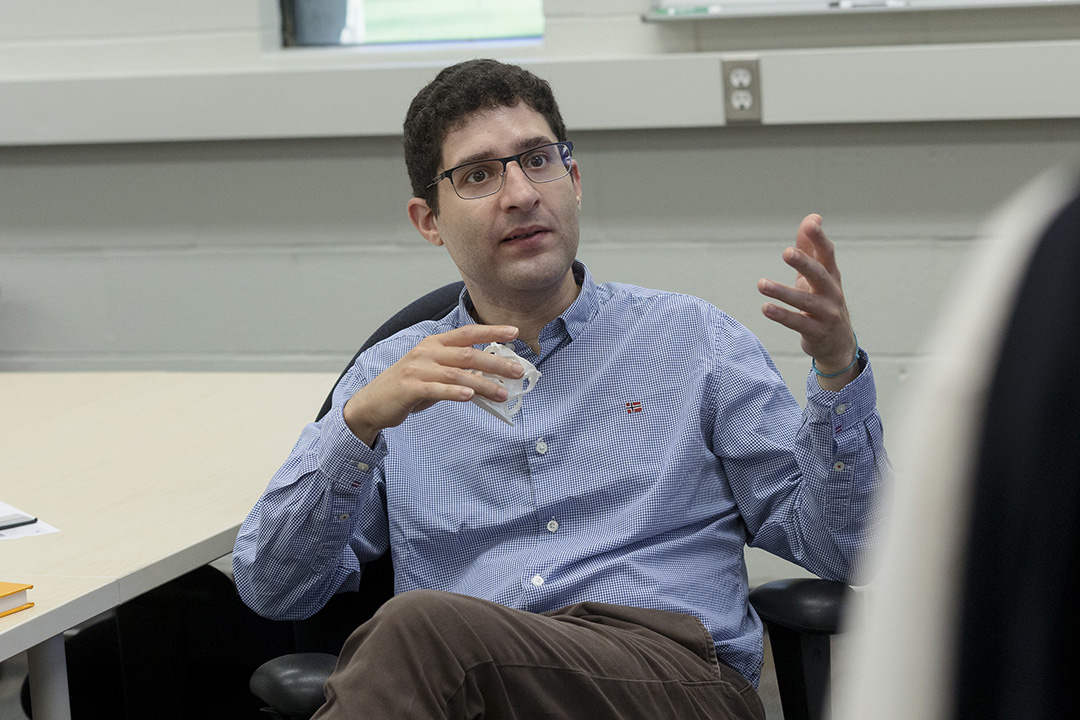
Why quantum innovation needs everyone
No one can sit out the revolution that’s coming, says USask quantum researcher
By Chris PutnamFor Dr. Steven Rayan (PhD), World Quantum Day on April 14 is an opportunity to bring more people into a vital conversation.
“Quantum research is not just something that’s happening in labs,” said Rayan, a professor in the Department of Mathematics and Statistics at the University of Saskatchewan (USask). “I really think that we’re approaching a juncture in quantum innovation where we truly need the input of everyone, and the skills and expertise of everyone.”
Rayan, who leads USask’s Quantum Innovation signature area of research, believes quantum science is on the brink of radically changing our lives in ways that could be positive or negative.
Quantum computers are one example. Vastly better than current computers at solving certain kinds of problems, these machines will speed the development of new medicines and bring other social benefits. But they might also give hackers the power to crack the encryption algorithms that make digital security and privacy possible.
This raises questions that can’t be answered by the physics and mathematics of quantum science. How should this technology be regulated? What will be the economic consequences if banking is no longer secure? How much do we value privacy?
“We’re seeing the birth of incredibly powerful technologies that did not exist before. This really is a paradigm shift,” said Rayan. “And people need to be aware. They need to be involved in the conversation. They need to take some ownership early in the game over what these technologies are going to do for us and how they’re going to intersect with our lives—hopefully in the most positive ways possible.”
Rayan is an advocate for the role of the arts in quantum innovation, and he credits artistic thinking for the mathematics research that recently made him the finalist for a prestigious Cozzarelli Prize. The College of Arts and Science professor thinks that other academic disciplines—and the public at large—are equally important in shaping the future of the field.
Quantum science might soon, for instance, give us MRI (magnetic resonance imaging) machines that are smaller, cheaper, and more accurate than current medical scanners. Scientists and engineers will create the technology, but it will be up to citizens and communities to ensure it is used in a fair and equitable way.
“We need to have an understanding beyond the nuts and bolts of quantum particles and quantum science. How are these technologies going to be used? Only the public can answer that,” said Rayan.
USask’s Quantum Innovation signature area is built around this kind of collaboration, Rayan notes. The signature area’s scope goes beyond scientific research to questions of how quantum science is reshaping society and how it is represented in media and art.
Since the announcement of the signature area early last year, Rayan said he has seen “an outpouring of interest in the quantum initiative” at USask.
“I’ve been fielding constant enthusiastic, excited inquiries from faculty, staff, post-doctoral fellows, students, from all corners of campus and beyond about how they can get involved.”
In the past year, USask and its Centre for Quantum Topology and Its Applications (quanTA)—which Rayan directs—have started working with several industry partners and other institutions on shared quantum research and funding initiatives.
Rayan praises the faculty, students and post-doctoral fellows who are already spearheading exciting quantum research at USask, as well as USask Vice-President Research Dr. Baljit Singh (PhD) and his staff for their support of the Quantum Innovation signature area.
The quantum future is as much about people as it is about technology, said Rayan.
“I think there’s a huge potential for a homegrown quantum industry to start in Saskatoon and in the province, fueled by what’s happening right now with the Quantum Innovation signature area,” he said. “It’s something that will be created by the students who are sitting in our classes right now.”

